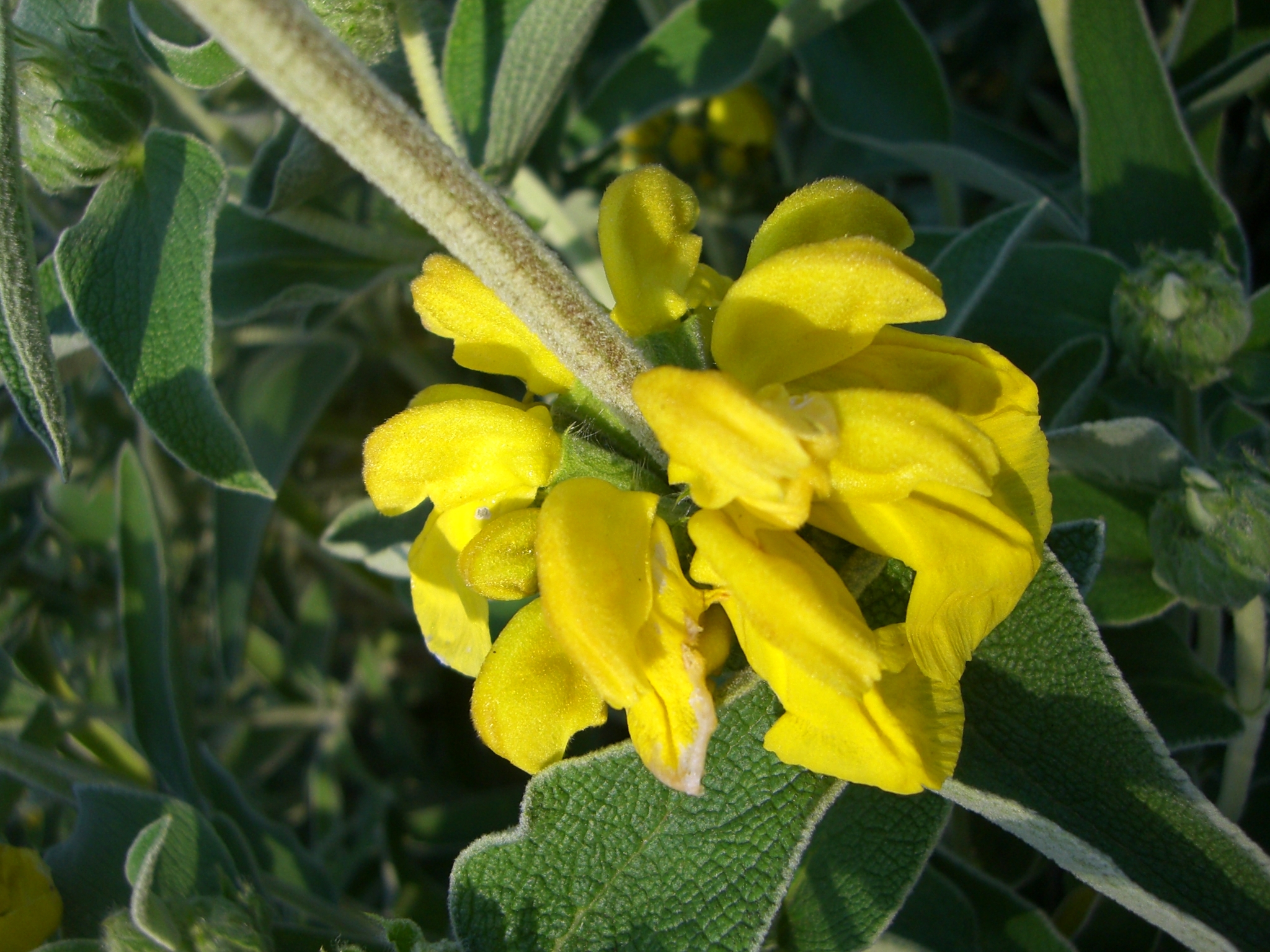
Greek phlomos — mullein, referring to the woolly covering of some species.
Perennial hairy, sometimes woolly herbs, subshrubs or shrubs. Leaves opposite, simple. Flower clusters in axillary whorls. Flowers with calyx tubular, 5-10-nerved, 5-toothed. Corolla 2-lipped, generally with a ring of hairs inside, yellow (occasionally white, lilac or purple). Stamens 4, in 2 pairs.
A few rarer species are occasionally cultivated, including P. italica which has white-hairy oblong leaves and pinkish or pale lilac flowers, and P. russeliana with ovate leaves and yellow flowers.
Grown mostly as border plants for the often grey and sage-like foliage above which spire dense whorls of yellow (rarely lilac or pink) flowers in summer.
Shrubby species by cuttings, herbaceous species by division or sometimes seed.
P. fruticosa has aromatic foliage.
Upper lip of corolla not longer than lower; flowers mostly yellow.
About 100 species, mostly of dry country from China to C Asia and the Mediterranean.
Source: (2002). Origanum. In: . Horticultural Flora of South-eastern Australia. Volume 4. Flowering plants. Dicotyledons. Part 3. The identification of garden and cultivated plants. University of New South Wales Press.
